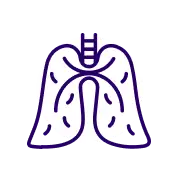
Living with NF1
For many, living with neurofibromatosis 1 (NF1) can be a challenge for the person with the condition and their caregivers. Plexiform neurofibromas (PN) can impact day-to-day life too. But it’s important to know you’re not alone.1,2
Here, we’ll talk you through the things you may encounter when living with NF1 or caring for someone with this condition.
Here, we’ll talk you through the things you may encounter when living with NF1 or caring for someone with this condition.
For some patients with NF1, symptoms can be mild and cause no serious health issues.3 Some people with NF1 and PN may have more intrusive symptoms, which greatly depend on where growths occur in the body.3 It is possible to have multiple symptoms, but it’s unlikely that someone will develop all of them.3
Symptoms can include:3-5
Symptoms can include:3-5
- Painless, coffee-coloured patches on the skin, called ‘café-au-lait’ spots
- Clusters of freckling in unusual places, such as the armpits, groin or under the breast
- High blood pressure
- A curved spine (scoliosis)
- A larger than average head
- A lower than average weight
- Abnormal bone development causing curving (bowing) of the limb
- Migraines
- Learning difficulties
- Neurological conditions, including epilepsy
- Neurofibromas – non-cancerous cell growths on nerves or under the skin which vary in number and size
- PN – abnormal growths of cells on nerve fibres, which can occur anywhere in the body and can cause small or large swellings
NF1-PN can cause some challenges throughout the body, including:3,4,6–8
- Pain, weakness or numbness
- Limited physical mobility or strength
- Visual impairment
- Breathing problems
- Disfigurement
- Bowel or bladder changes as a result of neurofibromas on or near the spinal cord or in the abdomen






At times, NF1 may make people feel socially isolated. For example, children with NF1 may experience difficulties socialising.1,3 This could be because they feel self-conscious about visible marks, or pain may restrict their social life.6
However, there is support available for both you and your child, so seek help if either of you are facing any mental health challenges.
However, there is support available for both you and your child, so seek help if either of you are facing any mental health challenges.

Find out more about treating the mental and physical effects of NF1